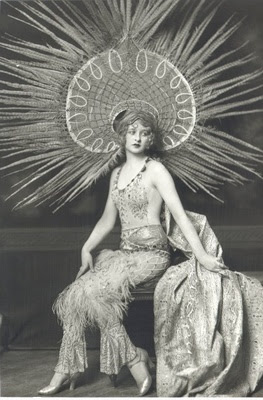b. November 23, 1892, St. Petersburg, Russia
d. April 21 1990, Paris, France
BIO
Erté was born Romain de Tirtoff in St. Petersburg Russia in 1892. The only son of an admiral in the Imperial Fleet, he was raised amidst Russia's social elite. As a young boy, he was fascinated by the Persian miniatures he found in his father's library. These exotic, brightly patterned designs continued to be important to him and influenced the development of his style.
Persian Miniature Paintings:




He moved to Paris at the age of eighteen and took the name Erté, from the French pronunciation of his initials, R and T. In 1915 he began his long relationship with Harper's Bazaar, during which time he created over 240 covers for the magazine.
Harper's Bazaar Magazine Covers:
His fashion designs also appeared in many other publications, making him one of the most widely recognized artists of the 1920s.
He also designed costumes and sets for the theater. In 1976 the French government awarded Erté the title of Officer of Arts and Letters, and in 1982 the Medaille de Vermeil de la Ville de Paris was bestowed upon him.
Costumes:
Persian Miniature Paintings:




Harper's Bazaar Magazine Covers:
To see more Harper's Bazaar covers by Erté, click here
His fashion designs also appeared in many other publications, making him one of the most widely recognized artists of the 1920s.
He also designed costumes and sets for the theater. In 1976 the French government awarded Erté the title of Officer of Arts and Letters, and in 1982 the Medaille de Vermeil de la Ville de Paris was bestowed upon him.
Costumes:
 |
| “The Arctic Sea”, 1925 |
 |
| Wedding costume for Aladin , 1929 |
 |
| Costume for the wife of a Russian boyar; The Woman and the Devil at the Théâtre Apollo, 1921 |
 |
| Costume for Pelléas et Mélisande, 1927 |
Set Designs:
 |
| Design for Stage Set, City Skyline Seen Beyond Terrace, for Manhattan Mary, 1927 |
To see more theater set designs, click here
Erté and the Ziegfeld Follies
The Ziegfeld Follies were famous for many beautiful chorus
girls commonly known as Ziegfeld girls.
Florenz Ziegfeld's theatrical spectaculars known as the Ziegfeld
Follies, were based on the Folies Bergère of Paris.... Erte costumes and sets
were featured in the Ziegfeld Follies of 1923.
Erté's theatrical innovations were
countless, including "living curtains" (showgirls with plumes and
pearls, festooned by embroidered trains. The Ziegfeld girls paraded up and down
flights of stairs semi-nude, as anything from birds to battleships.
These
beauties, of similar size, decked out in Erté designs, gained many young male
admirers and they became objects of popular adoration.
Prints and More Work (costumes, sets, apparel, etc.)
The
For the complete alphabet and numeral suite, click here
Work from the Metropolitan Museum of Art
Erté continued working throughout his life, designing
revues, ballets, and operas. He had a major rejuvenation and much lauded
interest in his career during the 1960s with the Art Deco revival. He branched
out into the realm of limited edition prints, bronzes, and wearable art.
Erté's work has exhibited in prominent museums around the world including the Metropolitan Museum of Art in New York, the Los Angeles County Museum in California, The Smithsonian Institute in Washington, D.C., The Victoria and Albert Museum in London, and more. Erté is credited as being the originator of the Art Deco Movement and is the style for which he is identified.






















)(brown).jpg)























